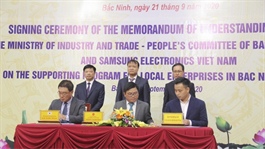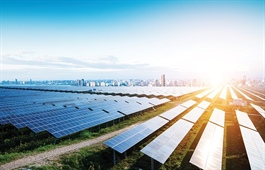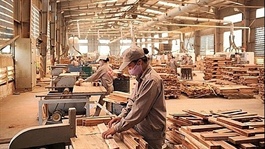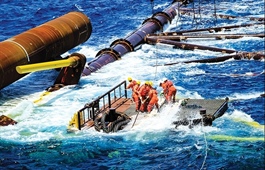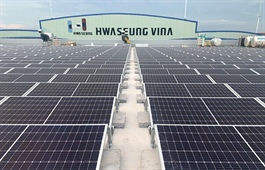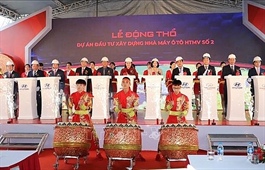How significant is Vietnam-US oil and gas cooperation?
How significant is Vietnam-US oil and gas cooperation?
The increasing American investment in Vietnam’s energy sector is a win-win proposition for both countries.
The cooperation in oil and gas between Vietnam, the fast-growing economy with energy demand growth rate of roughly 9.5% per year, and the US, the world’s third largest liquefied natural gas (LNG) exporter, has become stronger thanks to the significance with respect to both trade and political perspectives.
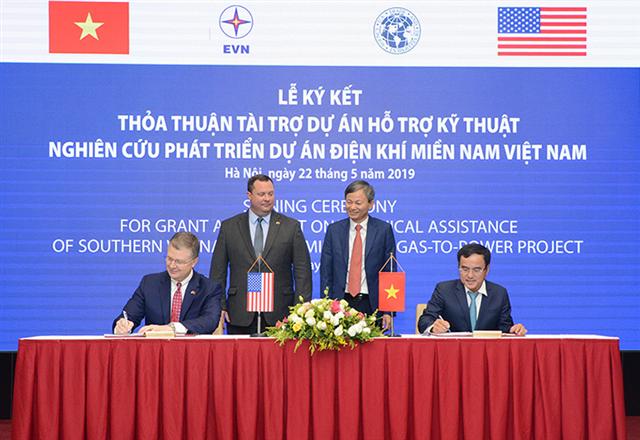
Vietnam Electricity (EVN) and the US Trade and Development Agency (USTDA) in May 2019 finalized a grant agreement on technical assistance for a gas-to-power project in Vietnam. Photo: EVN
|
Indeed, partnering with American firms would shrink Vietnam’s trade surplus with the US and help Hanoi hold the line in the South China Sea, according to Le Hong Hiep, Fellow at the ISEAS–Yusof Ishak Institute, Singapore.
In 2019, Vietnam’s total import turnover from the US stood at US$14.4 billion, statistics by the Vietnamese customs showed.
Long-lasting cooperation
Vietnam is currently working with ExxonMobil to develop the Blue Whale gas field off the country’s central coast, which is estimated to have 150 billion cubic meters in reserves.
The cooperation is of great significance at a time when Vietnam is seeking ways to reduce its coal-fired power and explore alternative energy sources.
Gas from the Blue Whale will be used to run three gas-fired power plants slated to be built at the nearby Dung Quat Economic Zone in the central province of Quang Ngai.
In November 2019, US-based AES Corp also won approval to build the 2,25-gigawatt (GW) Son My 2 gas-fired power complex in Binh Thuan province. The plant will be powered by LNG imported from the US.
Beside Son My 2, Vietnam is currently developing four other gas-fueled power projects using imported LNG, namely Ca Na 1 (1.5 GW), Son My 1 (2.25 GW), Bac Lieu (3.2 GW), and Long Son 1 (1.2 GW).
According to Vietnam’s Ministry of Industry and Trade, these new projects will push the Vietnam’s total installed capacity of gas-fired power plants up from 9 GW at present to 19 GW by 2029.
The development will drive up the LNG imports.
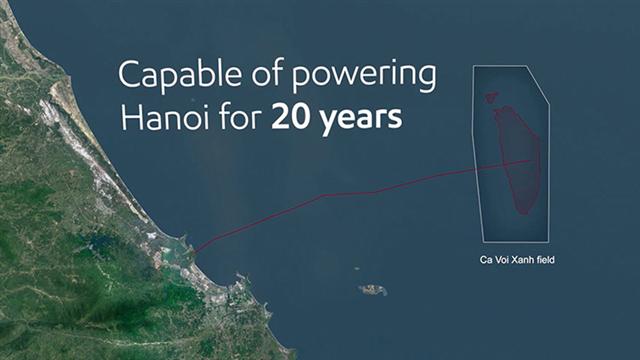
The Blue Whale gas field off Vietnam's coast developed by ExxonMobil. Photo: ExxonMobil
|
At the same time, the US has emerged as the third largest LNG exporter in the world. In 2019, it accounted for more than half of new global gas liquefaction capacity.
The fast-expanding American LNG industry and Vietnam’s growing demand for imported LNG open up a possible new frontier for Vietnam-US cooperation.
Once put into operation, for example, the Son My 2 power complex will create annual demand for American LNG worth US$2 billion.
Although it could potentially import LNG from a number of countries, Hanoi is particularly interested in tapping American suppliers as part of efforts to improve its trade balance with the US.
In 2019, Vietnam recorded a trade surplus of US$47 billion with the US, according to the General Department of Vietnam Customs.
Given pressure from the Trump administration, Vietnam has committed to improve the trade balance, especially by increasing its imports from the US, including purchasing American LNG to fuel its planned gas-fired power plants.
Politic significance
Le Hong Hiep, in an article posted on The Diplomat, said strategically, the US currently plays a key role in Vietnam’s efforts to push back China’s coercive actions in the South China Sea.
During major bilateral confrontations in the South China Sea in 2014 and 2019, for example, US diplomatic backup proved essential to Hanoi’s attempts to mobilize international support against China’s bullying behavior, he noted.
In this connection, China’s repeated harassment of Vietnam’s oil and gas activities in the South China Sea gives Vietnam another good reason to engage US firms like ExxonMobil for its oil and gas projects.
Hiep added that the US has recently hardened its stance on China’s expansive maritime claims in the South China Sea and condemned Beijing’s obstruction of other claimant states’ lawful oil and gas activities in their waters.
Against this backdrop, working with American firms to develop hydrocarbon resources could be a workable strategy for Hanoi, given that Washington will be more willing than most other countries to offer backing to its firms in the face of Chinese harassment.
It is China’s maritime expansionism and bullying actions that are forcing Vietnam’s hand, Hiep said.
With this regard, Professor Carl Thayer of the University of New South Wale (UNSW), Canberra said it is in Vietnam’s interest to have several foreign oil and gas companies involved in developing its hydrocarbon sector and gas-fired power plants rather than become too reliant on one partner.
While the US government may work closely with American oil and gas companies, they are separate and independent entities. American companies factor risks into their commercial calculations and US government backing could help mitigate these risks, he added.
There can be no question that increased American investment in Vietnam’s energy sector is a win-win proposition for both countries.
It is in the US national interest to protect American investment in Southeast Asia in general and Vietnam in particular. It is also in Vietnam’s interest to develop its energy sector and to have US support and backing against Chinese intimidation.








